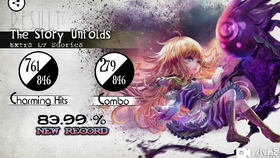Cuban Pete The Mask: A Vivid Exploration into Masked Culture and the Unveiling of Heritage
In the tapestry of global folklore and cultural expressions, Cuban Pete the Mask stands as a beacon of creativity and tradition. This article delves into th……
In the tapestry of global folklore and cultural expressions, Cuban Pete the Mask stands as a beacon of creativity and tradition. This article delves into the captivating world of masks, particularly focusing on the character of Cuban Pete, a figure synonymous with the vibrant and expressive art of mask-making in Cuba. Through a detailed exploration, we aim to uncover the intricate details of masked culture, the profound symbolism behind these enigmatic masks, and the unique heritage they represent.
Cuban Pete the Mask is not merely an object of aesthetic admiration; it is a vessel through which the rich tapestry of Cuban culture is woven. The character of Cuban Pete, with his distinctive features and vibrant colors, serves as a bridge between the past and the present, connecting the traditions of the island with the contemporary world. By examining the historical context and cultural significance of Cuban Pete the Mask, we gain a deeper understanding of the role masks play in Cuban identity and heritage.
Masked culture in Cuba is a phenomenon that dates back centuries, with roots deeply embedded in the island's history and mythology. Masks were originally used in religious ceremonies and festivals, serving as a means of communication between the divine and the earthly realm. Over time, they evolved into a form of artistic expression, reflecting the societal values, beliefs, and aesthetics of the Cuban people.

Cuban Pete the Mask, in particular, stands out for its unique blend of traditional techniques and modern innovation. The creation of these masks involves a meticulous process of carving, painting, and assembling, each step imbued with symbolic meaning. The vibrant colors and intricate designs of Cuban Pete the Mask not only captivate the eye but also carry deep cultural significance, representing elements of nature, mythology, and daily life in Cuba.
The symbolism behind Cuban Pete the Mask is multifaceted, with each element contributing to the overall narrative. For instance, the use of bright colors and bold patterns symbolizes the vibrancy and resilience of Cuban culture. The intricate designs, often depicting scenes from Cuban folklore and mythology, serve as a visual representation of the island's rich history and heritage. Furthermore, the masks themselves are often imbued with protective qualities, believed to ward off evil spirits and bring good fortune to those who wear them.

The cultural significance of Cuban Pete the Mask extends beyond its artistic and symbolic value. Masks have played a crucial role in Cuban festivals and celebrations, serving as a means of collective expression and identity. During events such as Carnival and other cultural festivals, masks are donned by participants, allowing them to embody their cultural heritage and celebrate their identity with pride.
In the contemporary world, Cuban Pete the Mask continues to be a symbol of cultural pride and heritage. Its vibrant colors and intricate designs have inspired artists and designers worldwide, blending traditional Cuban techniques with modern aesthetics. Through exhibitions, workshops, and cultural events, Cuban Pete the Mask serves as a bridge between the island's rich cultural heritage and the global community.

In conclusion, Cuban Pete the Mask is more than just an object of artistic beauty; it is a powerful symbol of cultural identity and heritage. By exploring the intricacies of masked culture in Cuba and the significance of Cuban Pete the Mask, we gain a deeper appreciation for the rich tapestry of Cuban culture. Through its vibrant colors, intricate designs, and profound symbolism, Cuban Pete the Mask serves as a testament to the enduring legacy of Cuban heritage, connecting the past with the present and beyond.